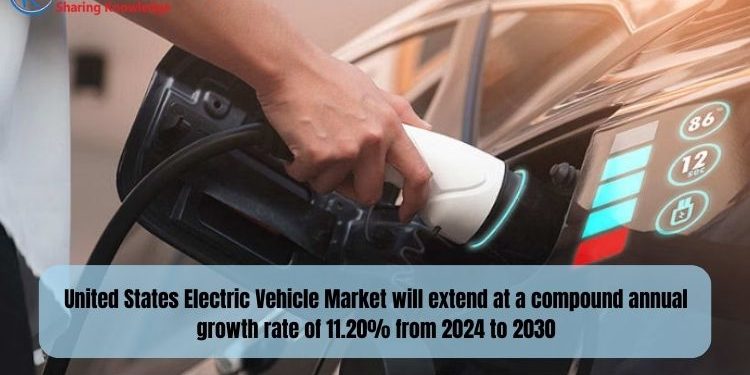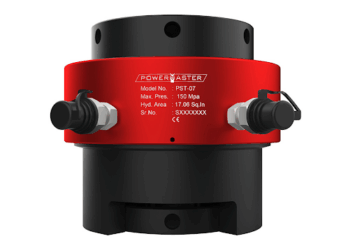Renub Research has released a report titled “United States Electric Vehicle Market: Industry Trends, Share, Size, Growth, Opportunity, and Forecast 2024-2030,” which includes market percentage records and a thorough enterprise analysis. This report looks at the competition, geographic distribution, and growth potential of the United States Electric Vehicle Market.
The United States Electric Vehicle Market will extend at a compound annual growth rate of 11.20% from 2024 to 2030. Electric motors (EVs) are gaining a reputation in the US today because of growing environmental awareness. With developing issues regarding climate change, EVs are perceived as a cleaner and more sustainable alternative, reducing carbon footprints. Government incentives, which include federal tax credits and state rebates, incentivize EV adoption. Technological improvements have increased battery efficiency, growing the practicality of EVs for daily use. A broader range of electrical trends from numerous automakers and increasing charging infrastructure provide clients with more options and convenience.
Further, the US electric vehicle market has diverse types and classes to meet consumer needs. Efficient green models like the Tesla Model 3 offer impressive mileage in the compact category—Midsize EVs balance area and efficiency, including the Tesla Model Y and Chevrolet Bolt. Larger electric SUVs like the Tesla Model X combine versatility with extended range. Electric pickup trucks, including the Tesla Cybertruck and Rivian R1T, cater to application demands. Luxury EVs like the Porsche Taycan and Lucid Air showcase high-performance alternatives. This collection displays the evolving landscape of electrical automobiles, supplying alternatives for specific options requirements. Hence, the United States’ electric vehicle market will be valued at around US$ 391.03 billion by 2030.
Request a free sample copy of the report: https://www.renub.com/request-sample-page.php?gturl=united-states-electric-vehicles-market-p.php
The United States EV market, projected to reach 1 million units in 2023, according to the International Energy Agency (IEA), anticipates EVs accounting for 40% of the latest car sales by 2030. Despite Tesla’s dominance, conventional automakers and startups like Rivian and Lucid Motors are intensifying competition with numerous models. This benefits clients by providing more alternatives, advantageous features, and potentially decreased prices. The future of the United States EV market emphasizes sustainability with battery recycling and practical material sourcing improvements. Investing in renewable energy for charging infrastructure helps cleaner transportation. Innovations in financing trends and broader access to incentives intention to make EVs more low-priced for various demographics.
Plug-in hybrid electric vehicles (PHEVs) are gaining prominence in the US electric vehicle market due to their versatility and addressing range anxiety concerns.
Combining a traditional combustion engine with an electric vehicle, PHEVs offer extended driving levels compared to their pure electric counterparts. This dual-strength capability fits the diverse needs of American consumers, mainly those with constrained access to charging infrastructure. PHEVs offer a seamless transition for drivers accustomed to conventional cars, supplying both fuel efficiency and the option for emission-free electric driving. Government incentives and a developing environmental cognizance further propel the adoption of PHEVs, making them a realistic and sustainable desire in the evolving US electric car panorama.
Products – United States Electric Vehicle (EV) Market breakup in 3 viewpoints:
- Battery Electric Vehicle
- Plug-in Hybrid Electric Vehicle
- Hybrid Electric Vehicle
The popularity of electric vehicles (EVs) with a range of up to 150 miles is burgeoning in the US market.
Affordability is essential, making EVs up to 150 miles a handy option for a broader customer base. Also, the constrained range aligns well with the everyday commuting needs of many Americans, addressing issues regarding charging infrastructure. The convenience of shorter charging instances and decreased range tension contribute to their attraction. Government incentives and a heightened focus on sustainability similarly enhance the boom of those mid-range EVs, offering an environmentally pleasant and sensible choice for a significant section of US drivers.
Range – United States Electric Vehicle (EV) Market breakup in 3 viewpoints:
- Upto 150 Miles
- 151-300m Miles
- Above 300 Miles
Due to economic and environmental imperatives, commercial electric vehicles (EVs) hold a substantial share in the US market.
Businesses are attracted to electrical fleets’ decreased operating costs, driven by reduced fuel expenses and renovation. Government incentives and a growing recognition of corporate sustainability initiatives similarly encourage the adoption of industrial EVs. The advanced technology and increasing charging infrastructure contribute to their viability. Notably, the acceptable total cost of possession and the alignment with efficient enterprise practices position commercial EVs as an attractive investment, fostering their substantial presence in the ever-growing US electric vehicle market.
Vehicle Type – The United States Electric Vehicle (EV) Market breaks in 3 viewpoints:
- Two-Wheeler
- Passenger Cars
- Commercial
The luxury electric vehicle (EV) class commands a substantial US market share.
Affluent purchasers are increasingly attracted to the opulence and modern technology offered through luxury EVs, combining performance with sustainability. Government incentives and tax credits incentivize high-end EV purchases. Luxury electric vehicles are becoming more prevalent in the US market as people become more aware of environmental issues and look for efficient alternatives. This trend is due to improvements in charging infrastructure and the range of these vehicles, which helps to overcome previous obstacles. The appeal of luxury and the industry’s commitment to innovation have cemented these cars’ growing and influential presence.
Vehicle Class – United States Electric Vehicle (EV) Market breakup in 3 viewpoints:
- Low Priced
- Mid-Priced
- Luxury
Competitive Landscape
Tesla, BMW, BYD, Mercedes-Benz, Ford, General Motors, Nissan, and Toyota are main comapnies in the United States electric vehicle market.
All the United States Electric Vehicle makrt Key players have been covered from 3 Viewpoints:
• Overview
• Recent Developments
• Revenue Analysis
Company Analysis:
- Tesla
- BMW Group
- BYD Company Ltd.
- Mercedes-Benz Group AG,
- Ford Motor Company
- General Motor Company
- Nissan Motor Co. Ltd.
- Toyota Motor Corporation
About the Company:
Renub Research is a Market Research and Information Analysis company with more than 15 years of experience in Research, Survey, and Consulting. Our research helps companies to take business decisions: on strategy, organization, operations, technology, mergers & acquisitions, etc. Till now we have published more than 7000 syndicated reports and worked on more than 500 custom research projects. Currently, we are supplying data to EMIS, Bloomberg, Thomson Reuters, etc. We support many blue-chip companies by providing them with findings and perspectives across a wide range of markets.
Contact Us:
Renub Research
Phone No: +1-478-202-3244 | +91-120-421-9822 (IND)
Email: info@renub.com
LinkedIn: https://in.linkedin.com/company/renub-research
Web: www.renub.com










